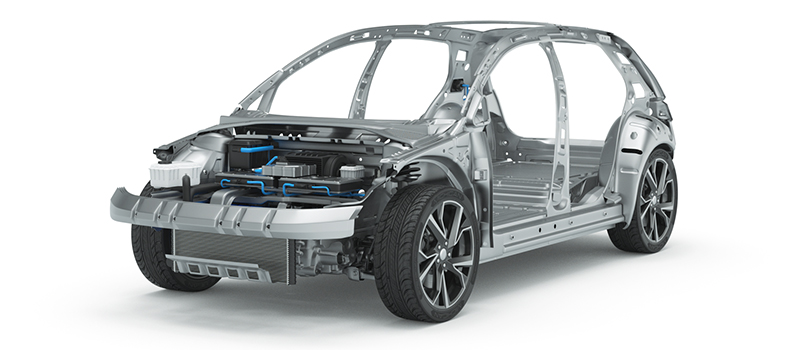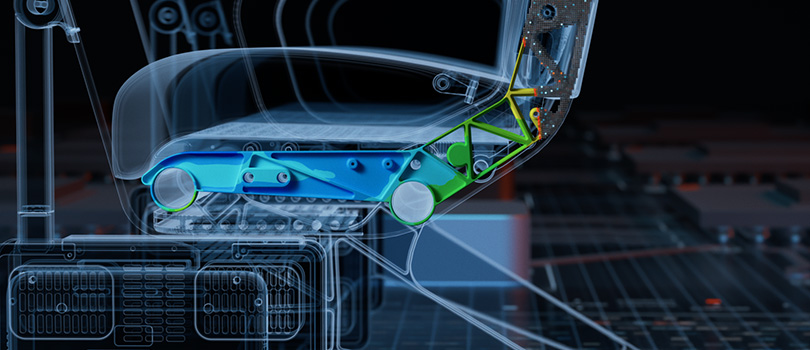
Altair® HyperMesh® Applications
Industries that produce complex, multi-system products need finite element simulation software to assess, verify, validate, and optimize both individual parts and systems of assemblies. Altair HyperMesh’s ability to set up, build, run, and assess multiphysics simulations of large geometries and assemblies makes it an ideal CAE product design tool for aerospace, automotive, consumer products, oil and gas, industrial design, and more.
Learn More About HyperMesh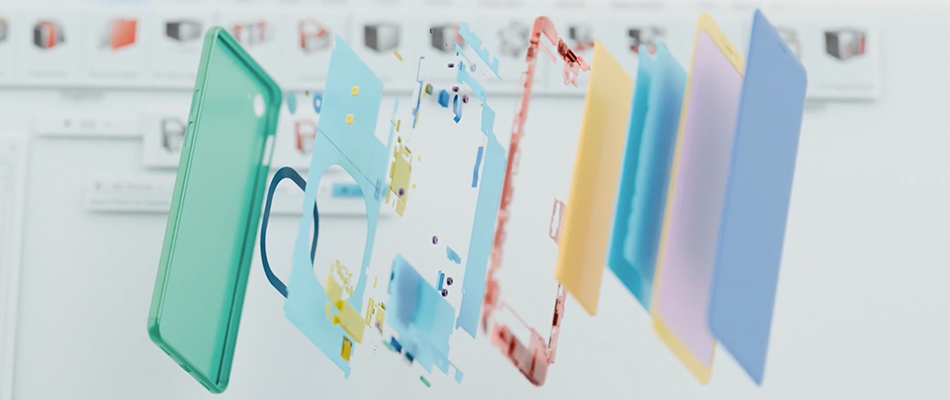
AI-Embedded CAE Workflows
As product complexity increases and development cycles shrink, finite element simulation software must become smarter to ensure engineers get designs to market on time. To meet this need, HyperMesh includes AI-embedded workflows that streamline product development. Intelligent tools like Altair® PhysicsAI™ help engineers train super-fast models that mimic simulation results. Other features help find / select / alter similar geometries, automate workflows, answer user questions, predict or replace some user decisions, and discover patterns. As a result, AI can democratize simulation workflows enabling more engineers to use HyperMesh with minimal training.
CAE Process Automation
Python Integration Support
Engineers can customize HyperMesh to their organization and industry needs using its Python integrations. This feature helps engineers streamline and standardize workflows, capture IP, automate tedious tasks, and democratize processes. HyperMesh even includes tools that can record an engineer’s HyperMesh inputs as Python code. This enables them to capture their simulation knowledge within coded applications, templates, and workflows.
API Integration
Engineers can use API integrations to enable HyperMesh to interact with any third-party software that supports Python. A common pain-point for engineers includes switching to other tools to perform tasks like modifying geometry, solver inputs, or reports. Manually switching tools to perform these tasks can be tedious and time-consuming. Using APIs and Python code, engineers can automate, control, and communicate with third-party software making it possible to change geometries, solver settings, report documents, and more, from within the HyperMesh user interface (UI).
End-to-End Model Assembly
Build and Assemble Large and Complex Simulations
HyperMesh includes model build and assembly workflows that aid engineers to link parts, materials, contacts, and connectors into large, multi-disciplinary simulations. The software includes various preset joints, connectors, and bolts which feed their connection characteristics into simulation models. The library of connectors includes adhesives, welds, seams, fasteners, rivets, and more.
Link Assemblies to CAD, PLM, PDM and more via Digital Threads
The model assembly workflows can import 3D geometry, configuration management data, and bills of materials (BOMs) from various tools including most CAD, PLM, and PDM software. HyperMesh stores the data in a team library database that tracks revisions, representations, configurations, and more. Additionally, HyperMesh includes tools to clean, produce, alter, and manage geometry, BOM, and configuration data within a single UI. By controlling all this information in a unified environment — and maintaining data consistency with other software via digital threads — engineers can switch tasks without switching tools and maintain a lone source of truth.
How can we help to streamline your modeling and visualization workflows?
Contact Us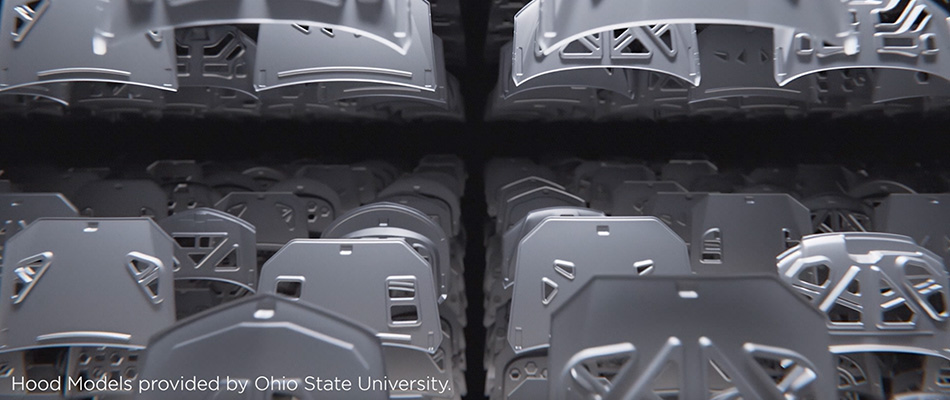
Concept Optimization
HyperMesh’s ability to assess and revise geometries, configurations, and BOMs in a single UI helps to incentivize engineers to adopt concept modeling and optimization workflows. Concept modeling helps engineers better understand how their choices affect a product’s key performance indicators (KPI). Based on simulation results, engineers iterate designs to maximize KPI (like durability and crash ratings) while limiting factors like weight, mass, and cost. Concept models can represent whole assemblies, subsystems, or individual parts. They can also contain free-form models, mixed-fidelity models, and high-fidelity models.
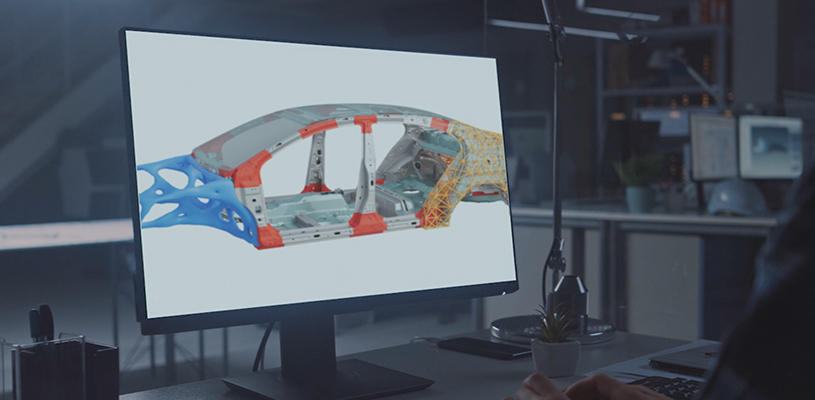
Skeleton Modeling with Reduced Order Models (ROMs)
HyperMesh can simplify the concept modeling process with skeleton models. Using previous simulation data, engineers can produce reduced order models (ROMs) that mimic the output of a full 3D simulation, but much faster. By cutting the time to results from weeks to hours, skeleton models enable engineers to assess more concepts and better optimize designs.
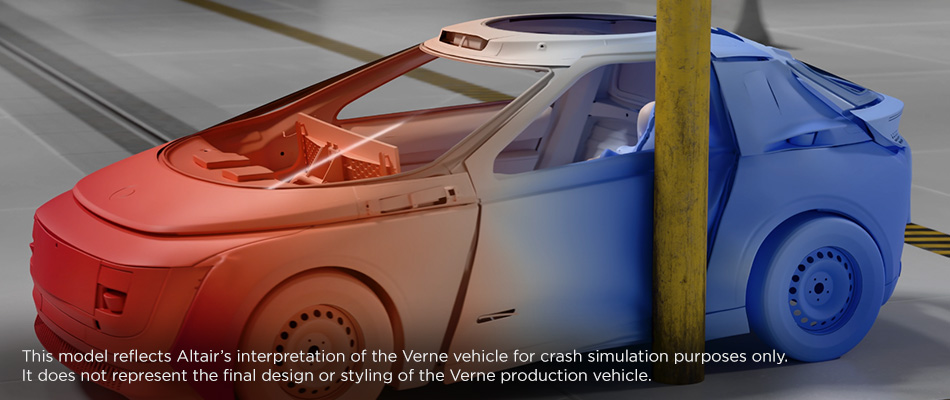
Crash and Safety
Crash and safety testing is expensive and complex to perform in the real world. This is why HyperMesh contains finite element simulation software tools that facilitate engineers to digitally evaluate crash and safety performance. Using these workflows, engineers import CAD geometry and then position, set up, and assess virtual dummies, seat belts, airbags, crash permutations, and more. The crash and safety workflows are solver agnostic and proven to work with Altair Radioss, LS-Dyna, and PAM-CRASH. HyperMesh crash and safety workflows also enable engineers to iterate their designs to meet all crash and safety regulations under various scenarios and load cases.
See if HyperMesh is right for you.
Contact Us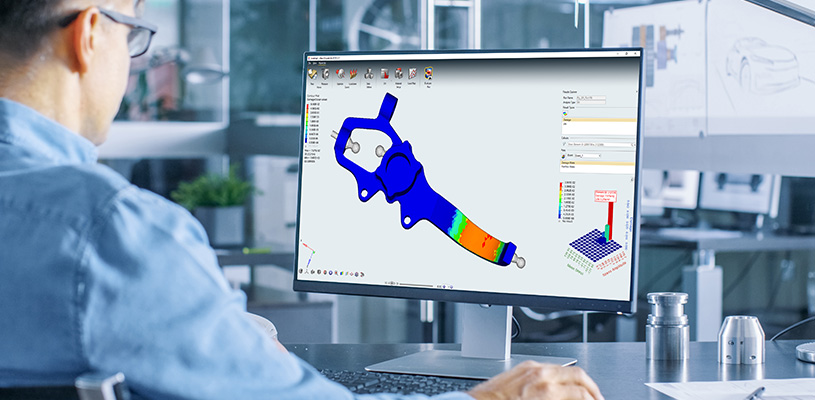
Fatigue and Durability
Assessing a product’s response to repetitive loadings can be a time consuming and expensive task. However, this information is important for engineers as it helps them predict a product’s service life. This, in turn, also improves an organization’s ability to gauge reasonable warranties for their products. HyperMesh offers engineers finite element simulation software tools that can optimize and assess designs for fatigue and durability. This solver agnostic workflow includes access to a large library of materials and is compatible with user defined materials. HyperMesh also contains part connector workflows that can model welds using heat affected zones (HAZ). Engineers can then assess these connections for fatigue and durability.
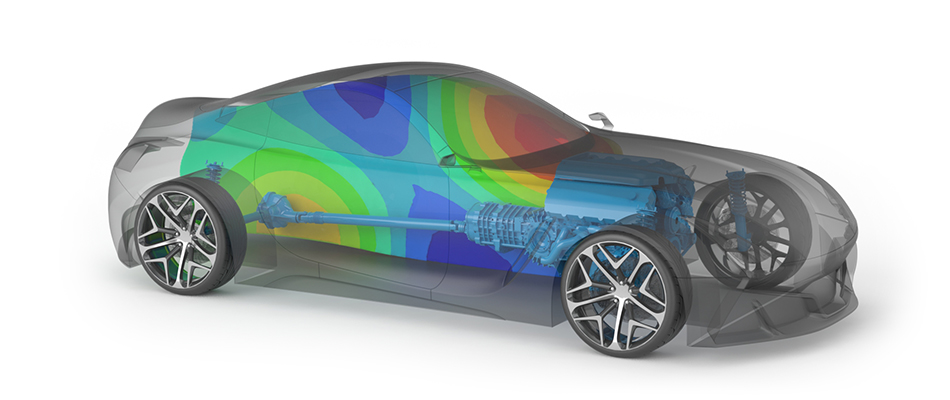
Noise, Vibration, and Harshness (NVH)
HyperMesh’s finite element simulation software aids engineers in reducing the noise, vibration, and harshness of full-vehicle designs. Engineers can manage multiple, interchangeable, and dynamic representations of their models and utilize various loadcases, post-processing, and NVH diagnostic tools. The streamlined NVH workflow ensures engineers can assess these requirements quickly and efficiently. Altair® HyperWorks® also contains the NVH Director (NVHD), a fully integrated user-friendly tool that can customize and automate full vehicle assembly, loadcase setup, and post-processing. It offers full frequency, multiphysics NVH simulation capabilities with multiple sample assessments and optimization-based design.
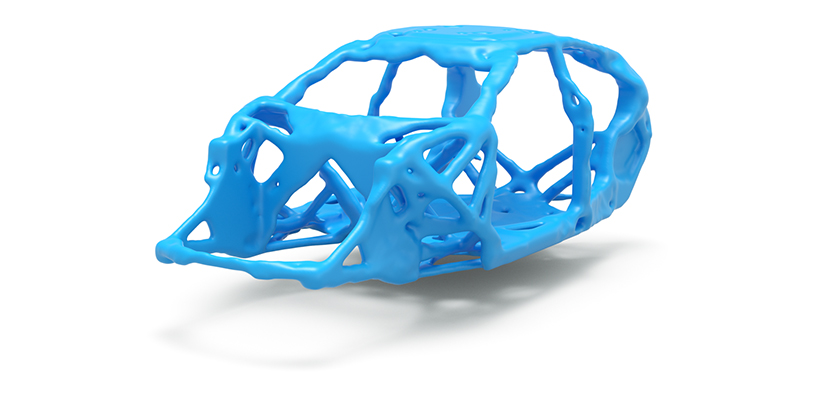
Topology Optimization
HyperMesh offers topology optimization tools that can automate the building of parts and models based on their design space, loadcases, and requirements. This can help users with limited CAD experience develop a near-optimal product design. As for seasoned design engineers, the tool gives them a starting point for further iteration. The tool includes a design space library, collision detection, and a voxel Boolean mesh engine. Topology optimization can also facilitate an engineer’s understanding of design variation, packaging space, and design space.
Featured Resources

Altair® HyperMesh® Introduction to New Interface and Technology
Are you looking to update to the new HyperMesh user experience and wondering how to get started? Do you want to leverage AI integration to accelerate your model-building process and variant assessment? Discover what's new in HyperMesh with this webinar se

Unleash the Power of AI for Generative Design
Generative Design represents an innovative and exciting new workflow within the HyperMesh Design Explorer, set to debut in HyperMesh 2024. AI algorithms in Generative Design help process the multi run topology optimization results and intelligently organize them into similar family of designs so that engineers can quickly select the best for a detailed design evaluation.
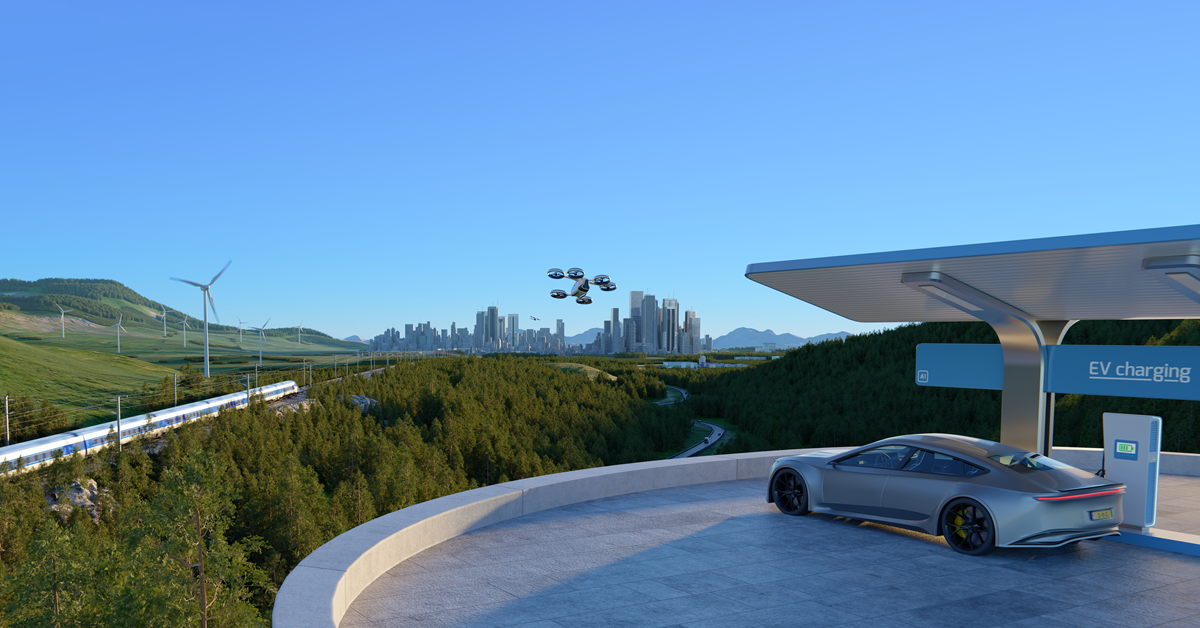
CAE Innovation - Altair at the Forefront of Sustainable Design
The latest advancements in solver technology, combined with expanded pre- and post-processing capabilities, including AI and design of experiments (DOE), have transformed Altair HyperMesh into the industry's most efficient development environment. This e-book, featuring automotive case studies applicable to many sectors, illustrates several prevalent engineering challenges and describes design and simulation workflows that empower engineers to meet them. These real-world examples underscore HyperMesh's superiority for collaboration, enhanced design optimization, and faster decision-making processes. The new CAE workflows explain why HyperMesh is an indispensable tool for accelerating development while delivering on innovation, sustainability, and quality commitments.

Design Without Limits - Altair HyperWorks Drives Innovation in Cleveland Golf's HiBore XL Driver
Cleveland Golf partnered with Altair to create the HiBore XL driver, redefining performance and innovation in golf club design. By using advanced simulation and optimization tools from the Altair HyperWorks platform, they tackled complex design challenges to improve forgiveness, weight distribution, and sound quality. Key achievements include a 24% reduction in off-center impacts, a 20% increase in vibration frequency, and a 19% larger clubface. This collaboration demonstrates the power of technology to break design limits and deliver exceptional results.
Download PDF



